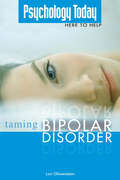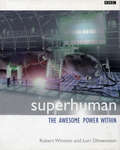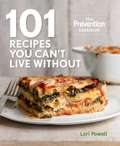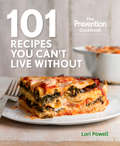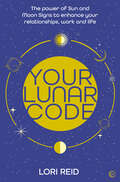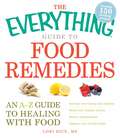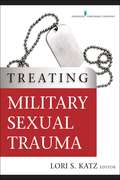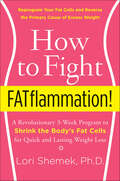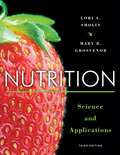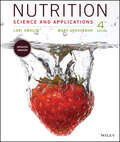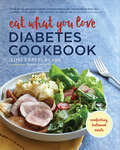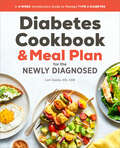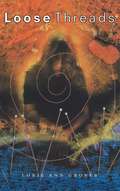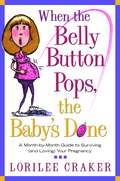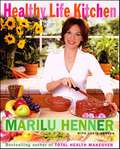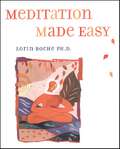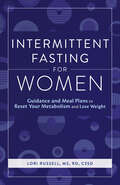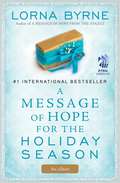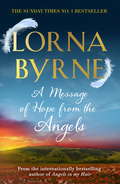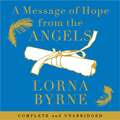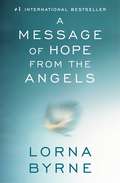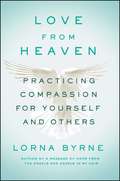- Table View
- List View
Heart to Heart: Your Guide to the Good Life
by Lori MoscaInformation meets inspiration for today's busy spouse, parent, caregiver, provider... and everything else you're expected to be. You worry about your father's bad habits. Your mother's refusal to listen to her doctor. Your spouse's cholesterol. Your children's diet. For better or worse, you're the center of your family's universe and the person trying desperately to keep them all healthy. As if you weren't busy enough! Dr. Lori Mosca is not only one of America's top doctors; she is also a wife, a mother and a daughter. She's been where you're standing, and her message is simple: To improve your family's health, you have to start with yourself. And there are three steps to do it. Know It. Knowledge is power. This goes beyond diet and fitness to stress management, personal fulfillment, daily attitude and spiritual practice. Happiness and health are not mutually exclusive. Nurture It. Take care of your heart, but also your soul. Don't deprive yourself of what makes your life enjoyable. Nurture the better, healthier parts of your routine. Gradually incorporate changes that make you healthy, happy and vital. Share It. Lead by example and your family will follow. Have healthy fun together and share not just your knowledge but your time. A healthy heart isn't another item on your to do list, but a new attitude that will make life easier-and give you more time and energy to share with those you love. Dr. Lori Mosca has helped thousands take control of their lives and their health. Her proven program for family heart health is transforming the practice of medicine in hospitals and doctors' offices across the nation. Now let it transform you and your family--for life!
Psychology Today Taming Bipolar Disorder
by Lori OliwensteinLiving and thriving with bipolar disorder. Bipolar disorder is about the wildest of euphorias and the deepest of depressions. Now, Alpha Books and Psychology Today present all the information, guidance, and support people with bipolar disorder—and their loved ones—need in order to thrive. This important book contains cutting-edge research and straightforward advice from the most respected names on bipolar disorder, along with the most up-to-date information on mental health organizations and support and advocacy groups. In addition, readers will find inspiring stories of courage and triumph. • More than two million Americans live with bipolar disorder—and it&’s on the rise among children and adolescents. • Includes strategies for navigating the health care system, nurturing relationships, advancing in the workplace, and repairing bridges burned during mania and depression. • Features the latest research—from new pharmaceuticals to innovative therapies, dietary changes to acupuncture, light therapy to mood charting.
Superhuman
by Lori Oliwenstein Professor Lord Robert WinstonAccompanying the major new BBC documentary series, Superhuman explores the human bodys astonishing ability to heal, renew and regenerate itself. In recording the before, during and after of radical operations on real people it introduces us to the pioneering efforts of medical teams and alerts us to the ethical issues that new medical advances raise. Over six chapters Superhuman addresses significant developments within six key medical areas: cancer, infection, transplantation, trauma, repair and reproduction. Acknowledging the debt modern physicians owe to yesterday Superhuman begins by investigating the human bodys innate abilities to heal itself. And, as we gladly launch ourselves into an age of biotechnology, it questions whether we might now use all the information available to us to comprehend finally how our bodies work? If we can achieve that, perhaps becoming superhuman is truly within our reach. Chapter one introduces us to the trauma surgeons who have discovered that the shock that follows trauma can prove beneficial in saving the body and the brain. Chapter two chronicles the astonishing technology now being used in medical transplants and the contentious issues these processes excite. Should technology continue to develop apace how are doctors and patients to choose between using an artificial limb created specifically for a patient, a human limb grown from the patients own genetic information, or the alternative solutions offered by the animal kingdom? And is intervention of true benefit to the patient if it requires a lifetime of immuno-suppressing drugs? The recent successes of the Human Genome Project have dissolved the boundaries of regeneration with made-to-order organs no longer beyond our limits. Chapter three presents the scientists responsible for engineering human tissue from materials found in the body and outlines how they might help us might claim our lost powers of regeneration. Chapter four relates how we are faring in the battle against the old enemy cancer and tells how experts in this field are trying to regain control of the cancer cells that turn against us. Chapter five explains how we strive to combat the threats we all face living in a modern world teeming with globetrotters who share one feature we're all potential contagion-carriers. Superhuman goes on to inform of the dangers of pushing too far to eradicate infectious disease from our lives completely. Chapter six spotlights an area of considerable debate that will possibly alter the course of human evolution fertility and genetic manipulation. Superhuman discusses both the advantages and the dangers of new technologies in this area, arguing that they have many positive applications and that often the hazards are overstated, solely through fear. In an attempt never to lose sight of our humanity while inviting the superhuman in us all to work, Superhuman encourages a holistic approach to medicine and an open forum for the discussion of the future of medical science.
101 Recipes You Can't Live Without: The Prevention Cookbook
by Lori PowellIrresistible, easy dishes that will help readers cultivate healthy bodies. Half of Americans take dietary supplements, with little proof that they do anything to protect their health. What has been proven: the healing power of nutrients in food. In "101 Recipes You Can't Live Without," readers will learn how to get everything they need from their plates--deliciously and without overdoing it on calories. People who want to feel better, lose weight, and stay healthy for years to come can't rely on pills: they need to know how to eat smarter. Prevention has identified the best sources of 13 essential nutrients for a healthy body--the ones research shows have the most disease-fighting potential--and created 101 flavor-packed dishes loaded with them. The secret is combining superfoods. From hearty breakfasts to mouthwatering desserts, readers can rest easy knowing that every bite they take is maximizing their health and satisfying their taste buds. Along the way, they will discover easy food swaps and strategies to help them make the most nutritious choices at every meal. Let's face it, no one has ever said "isn't this vitamin pill delicious?" or bonded with friends and family over a packet of antioxidant supplements.
101 Recipes You Can't Live Without: The Prevention Cookbook
by Lori Powell The Editors of Prevention<P>Irresistible, easy dishes that will help readers cultivate healthy bodies. <p>Half of Americans take dietary supplements, with little proof that they do anything to protect their health. What has been proven: the healing power of nutrients in food. <p>In 101 Recipes You Can't Live Without by Lori Powell, readers will learn how to get everything they need from their plates—deliciously and without overdoing it on calories. People who want to feel better, lose weight, and stay healthy for years to come can't rely on pills: they need to know how to eat smarter. <p>Prevention has identified the best sources of 13 essential nutrients for a healthy body—the ones research shows have the most disease-fighting potential—and created 101 flavor-packed dishes loaded with them. The secret is combining superfoods. <p>From hearty breakfasts to mouthwatering desserts, readers can rest easy knowing that every bite they take is maximizing their health and satisfying their taste buds. <P>Along the way, they will discover easy food swaps and strategies to help them make the most nutritious choices at every meal. Let's face it, no one has ever said "isn't this vitamin pill delicious?" or bonded with friends and family over a packet of antioxidant supplements. <p>With 101 Recipes You Can't Live Without you have the tool you need to craft the healthiest possible diet without feeling deprived.
Your Lunar Code: The power of moon and sun signs to enhance your relationships, work and life
by Lori ReidAstrology is the ultimate tool for self-discovery, empowerment and healing – learn to decode your sun signs and moon signs, and reveal the system for the life you desire.The wisdom of our sun signs flows through every aspect of our lives, from work and relationships to inner power and creative inspiration. The stars offer signposts, messages and guidance to assist us on our life journey. Your Lunar Code will show you how to decode these cosmic messages and empower you to become the best YOU possible. Drawing on her decades of experience as a world-renowned astrologer, Lori Reid will show you how to:Interpret your sun sign – the positions and soul intentions of the planets and aspects in your chartRecognize your traits, impulses, goals and needs, as well as those of your friends, family and partnerWork out your moon sign, and discover the feelings, ideals and fantasies that complete the pictureLearn to trust the power of the signs, encoded with the information you need to transform your life. Gain a deeper connection with the lunar code and, ultimately, yourself.
The Everything Guide to Food Remedies (The Everything®)
by Lori RiceSaffron boosts your mood. Pumpkin seeds promote a healthy prostate. Sea scallops improve cardiovascular health. Unlock the healing power of food and with this guide! In this A to Z guide, you'll learn how to incorporate the right nutrients into your diet to alleviate common ailments such as:Alzheimer's DiseaseInsomniaAcneFibromyalgiaCancerDepressionHigh Cholesterol Packed with more than 150 delicious recipes for 30 different ailments, plus detailed sections on what nutrients are best for your specific condition, this guide is your ultimate resource to healing yourself with what you eat. With this guide, you'll be cooking your way to a clean bill of health--and discovering that an apple a day really does keep the doctor away!
Treating Military Sexual Trauma
by Lori S. KatzAn evidence-based text for understanding and treating MST from multiple perspectives The incidence of sexual assault and harassment experienced by members of the U.S. Armed forces has reached epidemic proportions. Its victims often suffer from devastating, life-long consequences to their careers, health, relationships, and psychological wellbeing. This authoritative resource is written for mental health clinicians about understanding and treating military sexual trauma (MST). Based on a solid foundation of research and clinical expertise, it addresses the complex circumstances of victims of sexual abuse in the military and how clinicians can meet the unique challenges of treating these clients. The book describes how MST differs from other forms of military trauma such as combat and discusses its prevalence, neurobiology, and social contexts as well as unique stressors of betrayal, injustice, struggles with issues of reporting and disclosure, and impact on relationships and sexuality. It reviews current evidence-based interventions and offers insights on treating specific symptoms within MST, such as PTSD, anxiety, substance abuse, sleep disorders, and sexual dysfunction. Chapters discuss how a variety of psychotherapies can be used to treat MST, including Prolonged Exposure, Cognitive Processing, EMDR, Seeking Safety, ACT, and Somatic Experiencing, as well as the Warrior Renew MST group therapy program. Clinicians, who work with veterans and active duty personnel, will find this book an essential guide to working with MST survivors.
How to Fight FATflammation!: A Revolutionary 3-Week Program to Shrink the Body's Fat Cells for Quick and Lasting Weight Loss
by Lori ShemekFrom a leading voice in health, nutrition, and fat-cell research comes a radical and revolutionary approach to losing weight, looking great, and achieving optimum health—simply by restoring your body's fat cells to their natural state.Are you consistently overweight, no matter what you do? Have you tried everything? Are you plagued by stubborn fat hanging around your hips, thighs, and belly? Well, there's a reason for that. All those frustratingly pointless diets and exercise regimes have failed to address the root cause of weight gain.According to Dr. Lori Shemek, a successful diet isn't centered on calories or cardio. She says, "Cutting calories doesn't cut it." Our problems with fat are created because we eat foods that cause the body's natural fat cells to become inflamed. Sadly, the staples of the Standard American Diet—from pasta and bread to factory-farmed chicken and cattle, from sugar and artificial sweeteners to salad dressing and soft drinks—irritate our fat cells, causing chronic inflammation and chronically oversized fat cells. This irritation causes the body to store fat permanently, no matter how hard you exercise or how diligently you cut back on calories.Dr. Shemek calls this serious condition FATflammation, and only when you decrease the inflammation of the fat cells can you achieve the weight loss and optimum health you've been chasing. We need to forget about counting calories, counting points, fad diets, no-fat diets, and spending countless hours at the gym. There is a better and more satisfying way to lose the fat and maintain your desired weight. "If we want to fix our problems with fat," Shemek writes, "we need to reduce the inflammation in our fat cells." In How to Fight FATflammation Shemek reveals her revolutionary three-week program that helps reboot your body chemistry by returning your body's fat cells back to their natural, healthy state. In the process, she explains the critical importance of maintaining balance between good fats (omega-3) and bad fats (omega-6) and how a proper ratio of both will help boost your metabolism; in short, your body will burn fat simply by your eating the right kinds of fat. She also helps you eliminate from your diet the dreaded FATflammation Four—sugar, refined grains, high-fructose corn syrup, and artificial sweeteners. Here's your chance to shrink your fat cells and get the body you always wanted.
Nutrition: Science And Applications
by Lori Smolin Mary GrosvenorNutrition: Science and Applications, 3rd edition helps develop the scientific understanding to support personal and professional decisions. Using a critical thinking approach, Smolin brings nutrition out of the classroom and allows students to apply the logic of science to their own nutrition concerns both as consumers and as future scientists and health professionals. The text has been developed through collaboration between the authors and the Nutrition Advisory Board, a team of dedicated nutrition instructors who help review and develop all of Wiley’s nutrition resources.
Nutrition: Science and Applications, With Study Guide and Study Tips Set
by Lori Smolin Mary GrosvenorNutrition: Science and Applications, 4th Edition helps students develop the scientific understanding to support their personal and professional decisions. Using a critical thinking approach, Smolin brings nutrition out of the classroom and allows students to apply the logic of science to their own nutrition concerns – both as consumers and as future scientists and health professionals.
Eat What You Love Diabetic Cookbook: Comforting, Balanced Meals
by Lori Zanini RD, CDE Nandar Swe MD"As a Registered Dietitian Nutritionist, Certified Diabetes Educator, and person with diabetes who loves to cook, comfort foods are always my top choice. Eat What You Love Diabetic Cookbook offers delicious recipes that fit into a healthy eating plan for people with diabetes… Food should and can be enjoyed, and these recipes get a big thumbs-up from me—and from all my guests." —Toby Smithson, MS, RDN, LD, CDE, Diabetes Lifestyle Expert at DiabetesEveryDay.com and author of Diabetes Meal Planning and Nutrition for Dummies.Taking control of your diet is an important part of managing your diabetes, and you can do so without sacrificing the delicious comfort foods you love. According to the Mayo Clinic and the National Institute of Diabetes and Digestive and Kidney Diseases, making wise food choices is one of the most significant ways to avoid long-term problems caused by diabetes. Eat What You Love Diabetic Cookbook is the only diabetic cookbook that gives your body what it needs and your taste buds the comfort foods they really want.Registered Dietitian and Certified Diabetes Educator Lori Zanini specializes in providing guidance to clients facing serious health concerns, namely those with diabetes. She has helped thousands of people improve their lives through her science-backed, holistic nutrition approach.With her Southern roots and nutritional expertise, Lori's created this diabetic cookbook to show you how easy it can be to prepare comforting meals using whole foods that taste great and keep your diabetes under control. In Eat What You Love Diabetic Cookbook, you'll learn how what you eat affects your body and how to create a balanced plate without feeling limited.More than 100 recipes in this diabetic cookbook offer options for breakfast, lunch, dinner, and dessert including favorites like Breakfast Tacos, Slow-Cooker Pulled Pork Sandwiches, Chicken Pot Pie, Cherry Cobbler, and more.Helpful icons display which foods fulfill the requirements on your plate—carbs, protein, and veggies—and detailed nutritional information ensures you're meeting your current diabetic needs."Complete the Plate" tips with every recipe suggest pairings to create a balanced meal using any of the combinations in this diabetic cookbook.Eat What You Love Diabetic Cookbook will empower you to make responsible food decisions while enjoying the delicious comfort food you crave.
The Diabetic Cookbook and Meal Plan for the Newly Diagnosed: A 4-Week Introductory Guide to Manage Type 2 Diabetes
by Lori Zanini RD, CDETake control of your diabetes with a 4-week meal plan and tons of delicious recipes When you're newly diagnosed with type 2 diabetes, figuring out what is safe to eat can be a challenge. Create and enjoy meals confidently with a 4-week meal plan and more than 100 flavorful, nourishing recipes. This top choice in diabetic cookbooks makes it easier to not only manage your disease—but to thrive.Learn the basics of type 2 diabetes, including how nutrition and lifestyle choices affect your blood sugar. Find science-backed answers to common questions, along with practical advice for eating in different situations. All of the recipes include nutrition facts and advice for nutritious recipe pairings. Many of the dishes can be made in 30 minutes or less, helping to accommodate your busy lifestyle—and keep you on the road to long-term management of your diabetes.This diabetes cookbook and meal plan for the newly diagnosed includes:A month-long plan—This day-by-day diabetic meal plan is easy to follow, includes prep tips and shopping lists, and can be customized according to your weight-loss goals and caloric needs.100+ delicious recipes—Dig into Asian-Style Grilled Beef Salad, Black Bean Enchilada Skillet Casserole, Roasted Salmon with Honey-Mustard Sauce, Cream Cheese Swirl Brownies, and much more. A recipe for every taste bud.Helpful labels—Recipes include handy labels for different dietary needs like gluten-free and vegetarian, along with easy options like no-cook and 5-ingredient dishes.Manage your diabetes and get control of your health in as early as 4 weeks with the Diabetic Cookbook and Meal Plan for the Newly Diagnosed.
Loose Threads
by Lorie Ann GroverSeventh grader Kay Garber's happy home is made up of four generations of women: Great Gran Eula; Grandma Margie; Kay's mother, Karine; and Kay. But on the evening Grandma Margie tells her family she has a lump in her breast, Kay's world is changed forever. Struggling with issues of popularity in junior high school, trying to understand her too-perfect mother, dealing with her feelings about friends, and coming to terms with Grandma Margie's cancer diagnosis and illness, Kay is awhirl with questions that have no easy answers. But Kay is a survivor, and as she journeys through these difficult months she comes to a new understanding of the complexities and importance of faith and family. Told through forthright and perceptive poems in Kay's own voice, Loose Threads reverberates with emotion and depth and will leave no reader untouched.
Loose Threads
by Lorie Ann GroverSeventh grader Kay Garber's happy home is made up of four generations of women: Great Gran Eula; Grandma Margie; Kay's mother, Karine; and Kay. But on the evening Grandma Margie tells her family she has a lump in her breast, Kay's world is changed forever. Struggling with issues of popularity in junior high school, trying to understand her too-perfect mother, dealing with her feelings about friends, and coming to terms with Grandma Margie's cancer diagnosis and illness, Kay is awhirl with questions that have no easy answers. But Kay is a survivor, and as she journeys through these difficult months she comes to a new understanding of the complexities and importance of faith and family. Told through forthright and perceptive poems in Kay's own voice, Loose Threads reverberates with emotion and depth and will leave no reader untouched.
When the Belly Button Pops, the Baby's Done: A Month-by-Month Guide to Surviving (and Loving) Your Pregnancy
by Lorilee Craker"This is your brain...This is your brain on progesterone!" Have the hormones of pregnancy pushed you slightly over the edge? Here's permission to give in and have a few belly laughs as a mother of two and a panel of experienced moms revel in the humorous side of pregnancy. This warm and funny month-by-month guide contains serious wisdom for pregnant moms looking to have a joyful pregnancy. Reassuring and helpful for both body and soul, Lorilee and her Pregnant Pals address the whole mother-as only good friends can-with sidebars, checklists, quotables, and down-to-earth help such as: ·Tips on conquering nausea, narcolepsy, and general nuttiness ·How to panic-proof your pregnancy ·Good food and good exercise for great pregnant bods ·Chic, no-tents-allowed fashion tips ·Survival strategies for labor day Serving up spiritual encouragement for the whole nine months, this is the essential pregnancy book for Christian moms!From the Trade Paperback edition.
Healthy Life Kitchen
by Marilu Henner Lorin HennerIf you're like most people, 70 percent of what's in your kitchen right now is unhealthy and has to go. Now the good news ...This book will show you that there are healthy and tasty alternatives to everything in your refrigerator and pantry, and the transition is easier than you think.When it comes to food, most of us go through a constant tug-of-war between the foods we love and the foods we feel we should be eating. But what if we didn't have to give up our favourite foods? What if we could take recipes from our childhood or our favourite cookbooks and find healthier ways to enjoy them?Marilu Henner's Healthy Life Kitchen shows you a new way, a better way, to create a "health factory" in your home. Out go the red meat, dairy, and refined sugar products, and in come the freshest fruits, vegetables, grains, soy, seafood, poultry, and seasonings imaginable-and, in a few easy steps, you've created a Healthy Life you!After inspiring legions of readers with Marilu Henner's Total Health Makeover and The 30-Day Total Health Makeover, Marilu presents the first cookbook in her bestselling series.
Meditation Made Easy
by Lorin RocheYou′ve probably heard about the benefits of meditation: Sharper thinking, reduced stress, improved concentration, lower blood pressure, even increased sexual pleasure , all of these positive effects have been confirmed by science. In this uniquely accessible guide, Lorin Roche shows that meditation is that easy , and pleasurable. Roche answers questions and debunks meditation myths, and gives three easy-to-follow techniques for getting started 塴he Do Nothing Technique," "Salute Each of the Senses," and "Feeling at Home Exercise". He and shows you how to integrate "mini meditations" into spare moments of the day, from savouring morning coffee to taking advantage of the five minutes before a meeting. He explains how to overcome meditation obstacles, customise meditation to your own needs, and use your breath, voice, and attention as meditation aids. And he shows how meditation will give you the power to explore your inner passions , and enrich your sense of self.
Intermittent Fasting for Women: Guidance and Meals Plans to Reset Your Metabolism and Lose Weight
by Loris Russell MS, RD, CSSDWeight loss and a fresh metabolic start—a woman's intermittent fasting guide Fasting intermittently (taking scheduled breaks from eating) is a time-honored method of promoting balance in your body. This science-backed fasting guide is tailored to a woman's physiology, giving you a healthy alternative to stressful and ineffectual diet practices. Far from depriving yourself, you'll alternate periods of fasting and periods of nutritious eating to reset your metabolism—helping you lose weight, regulate your hormones, and slow down aging. Learn about common fasting types and find out how the process affects the female body. Simple meal schedules created by an experienced registered dietitian get you started safely and effectively. Straightforward guidelines make it easy to establish a stable routine. Some of the helpful features you'll find inside: Ways to fast—Explore the different styles of fasting—intermittent, alternate day, and extended—and get help choosing the best method for your body. Dependable plans—Set yourself up for success with schedules for different fasting patterns, including meal suggestions and at-a-glance calendars. Refreshment included—Ease through long fasting periods with nourishing drink recipes for rich bone broth, fresh blended juice, boosted coffee brews, and more. Support your well-being and your weight loss journey with Intermittent Fasting for Women!
Total Confinement: Madness and Reason in the Maximum Security Prison
by Lorna A. RhodesIn this book, Lorna Rhodes takes us into a hidden world that lies at the heart of the maximum security prison. Focusing on the "supermaximums"--and the mental health units that complement them--Rhodes conveys the internal contradictions of a system mandated to both punish and treat. Her exploration of maximum security confinement includes vivid testimony from prisoners and prison workers, describes routines and practices inside prison walls, and takes a hard look at the prison industry.
A Message of Hope for the Holiday Season: An eShort
by Lorna ByrneAn original eBook from the internationally bestselling author of A Message of Hope from the Angels.Irish mystic and internationally bestselling author of A Message of Hope from the Angels, Lorna Byrne has been seeing angels her whole life. In this eBook original, Byrne reveals a special type of angel, the blessing angel, that only appears during the holiday season. These angels offer us new beginnings and infuse us with faith that makes the connection among our soul, heart, and mind stronger--no matter what our religion. And when they touch us, they help us to realize how truly blessed we are. Lorna shares what she sees the angels doing at this time of the year to help us appreciate the important things in life and to infuse us with the angel's messages of hope.
A Message of Hope from the Angels: The Sunday Times No. 1 Bestseller
by Lorna ByrneIn A Message of Hope from the Angels Irish mystic Lorna Byrne brings a vital, urgent communication from above for these challenging times. 'The Angel told me, 'Hope makes the impossible possibleLorna sees angels with as much clarity as the rest of us see people and she speaks to them every day. In the past Lorna has talked about her life, and how the angels prepared her to deliver a message to the world. This book contains her message of hope, and this message is for you. She writes about how she sees angels helping people when they are feeling tired, helpless, depressed, unloved, inadequate as a parent, struggling financially or simply too busyIn A Message of Hope from the Angels Lorna tells in a simple and direct way how you can call on this help to make your life better and happier.
A Message of Hope from the Angels: The Sunday Times No. 1 Bestseller
by Lorna ByrneFrom the internationally bestselling author of Angels in my Hair comes The Sunday Times Number One bestseller with messages of hope for you. In A Message of Hope from the Angels Irish mystic Lorna Byrne brings a vital, urgent communication from above for these challenging times. 'The Angel told me, 'Hope makes the impossible possibleLorna sees angels with as much clarity as the rest of us see people and she speaks to them every day. In the past Lorna has talked about her life, and how the angels prepared her to deliver a message to the world. This book contains her message of hope, and this message is for you. She writes about how she sees angels helping people when they are feeling tired, helpless, depressed, unloved, inadequate as a parent, struggling financially or simply too busy.In A Message of Hope from the Angels Lorna tells in a simple and direct way how you can call on this help to make your life better and happier.(P)2012 Hodder & Stoughton
A Message of Hope from the Angels: The Sunday Times No. 1 Bestseller
by Lorna Byrne"These days I see a lot of angels holding lights in front of people, helping to encourage them. These are difficult and challenging times, but I see so much to be hopeful about and in this book I pass on these messages of hope." --Lorna Byrne Lorna Byrne sees angels with as much clarity as the rest of us see people, and she speaks to them every day. In A Message of Hope from the Angels Lorna gives us the comfort of knowing that no matter how alone we might feel, we always have a guardian angel by our side to support us. In this inspiring and uplifting book, Lorna reveals how we can call on the help of our angels to carry us through the challenges that we all inevitably face, including loneliness, depression, stress, financial strain, heartbreak, the death of a loved one, or feeling inadequate as a parent. No matter what obstacles we face, we can call on this support to make our lives happier and more fulfilling.hese messages and call on the help of your guardian angels to make your life happier and more fulfilling.
Love From Heaven: Practicing Compassion for Yourself and Others
by Lorna ByrneBestselling author and mystic Lorna Byrne teaches us how to have more compassion for both ourselves and others and to see all the love around us in this powerful and moving book—perfect for fans of Louise Hay and Doreen Virtue.Lorna Byrne, an Irish mystic, has been seeing angels since she was a baby, but she sees even more than that. In Love from Heaven, she reveals for the first time that she sees love as a physical force. Lorna first became conscious that the angels were teaching her about love when she was five years old, and today she can see how love manifests in each of us. She sees that newborn babies are full of pure love and that many teenagers and adults seem surrounded at the heart level by a transparent but ironlike band, which restricts that love. We are all pure love, but nine out of ten of us have locked away most of this love within ourselves. This love remains there, though—indestructible and ready to be released, if only we can learn to love ourselves first. Love from Heaven will transform the way you think about love, stir up the love within, and make you more compassionate, leading to a happier life for you and those around you.

